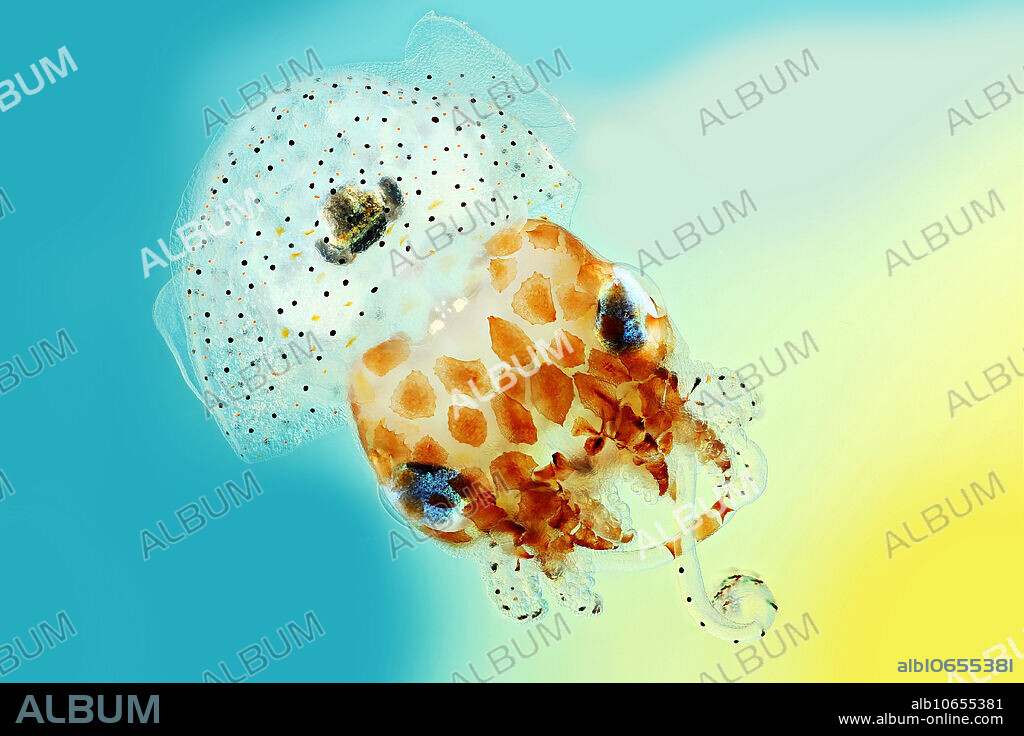alb10655381
Juvenile Hawaiian bobtail squid

|
Añadir a otro lightbox |
|
Añadir a otro lightbox |



¿Ya tienes cuenta? Iniciar sesión
¿No tienes cuenta? Regístrate
Compra esta imagen

Título:
Juvenile Hawaiian bobtail squid
Descripción:
Ver traducción automática
Juvenile Hawaiian bobtail squid, Euprymna scolopes. The squid forms a symbiosis with the bioluminescent bacterium Vibrio fischeri. The light organ (centre) is part of the ink sac-hind gut complex and houses the symbionts. Hawaiian bobtail squid are nocturnal predators, remaining buried under the sand during the day and coming out to hunt for shrimp at night neat coral reefs. The squid have a light organ on their underside that houses a colony of glowing bacteria (V. fischeri). The squid uses this bacterial bioluminescence in a form of camouflage called counter-illumination, masking it's silhouette by matching moonlight and starlight; thus hiding from predators swimming below.
Crédito:
Album / Science Source / Macroscopic Solutions
Autorizaciones:
Modelo: No - Propiedad: No
¿Preguntas relacionadas con los derechos?
¿Preguntas relacionadas con los derechos?
Tamaño imagen:
5472 x 3648 px | 57.1 MB
Tamaño impresión:
46.3 x 30.9 cm | 18.2 x 12.2 in (300 dpi)
Palabras clave:
ANIMAL • BIOLOGIA • BIOLÓGICA • BIOLUMINISCENCIA • CORDADOS • FAUNA • HAWAIANA • JOVEN • JOVENES • JUVENTUD • MACRO • MICRO • MICROFONO • MOLUSCO • NADIE • PRIMER PLANO • SIMBIOSIS • SIMBIÓTICA • VIDA SALVAJE • ZOOLOGIA
 Pinterest
Pinterest Twitter
Twitter Facebook
Facebook Copiar enlace
Copiar enlace Email
Email
